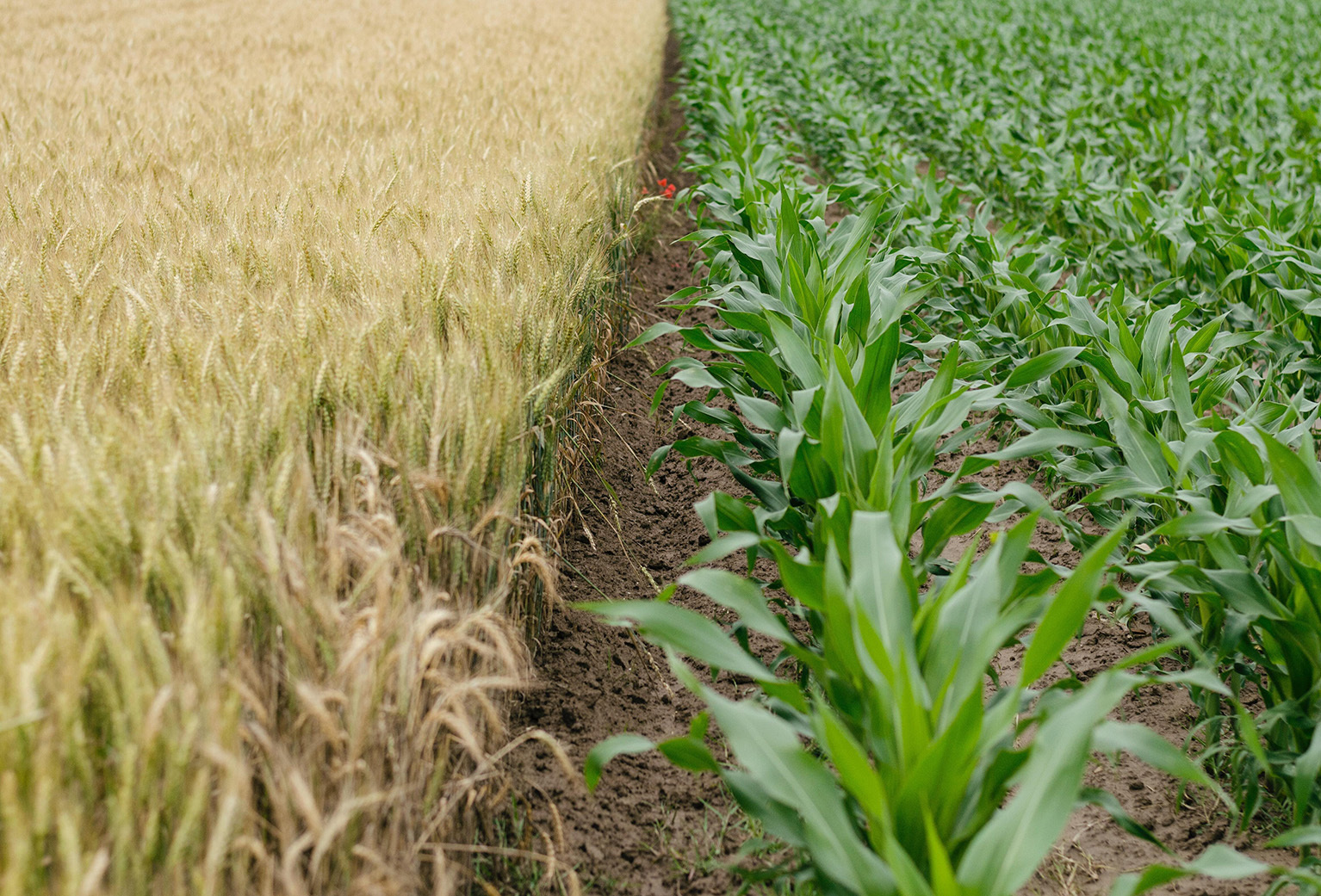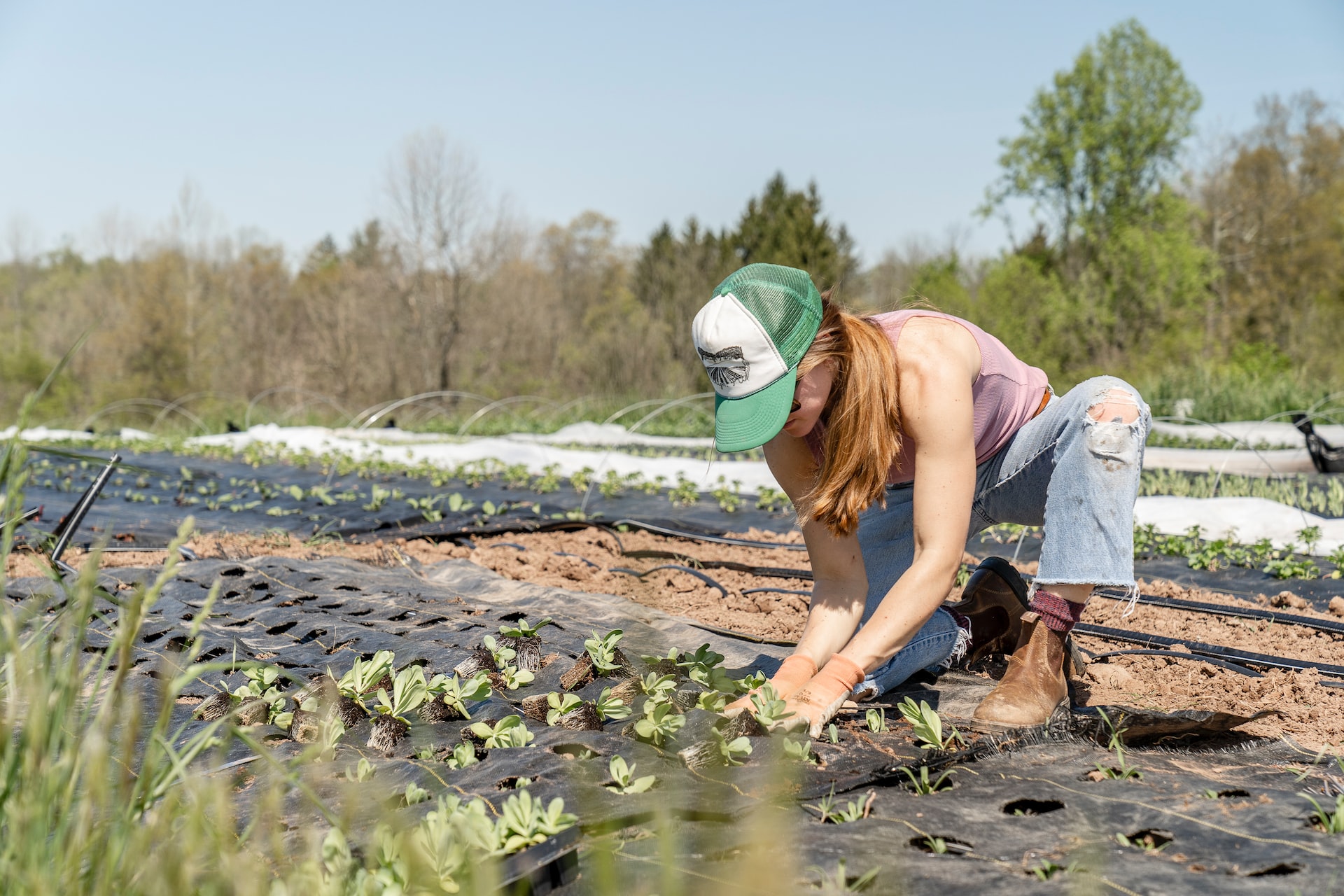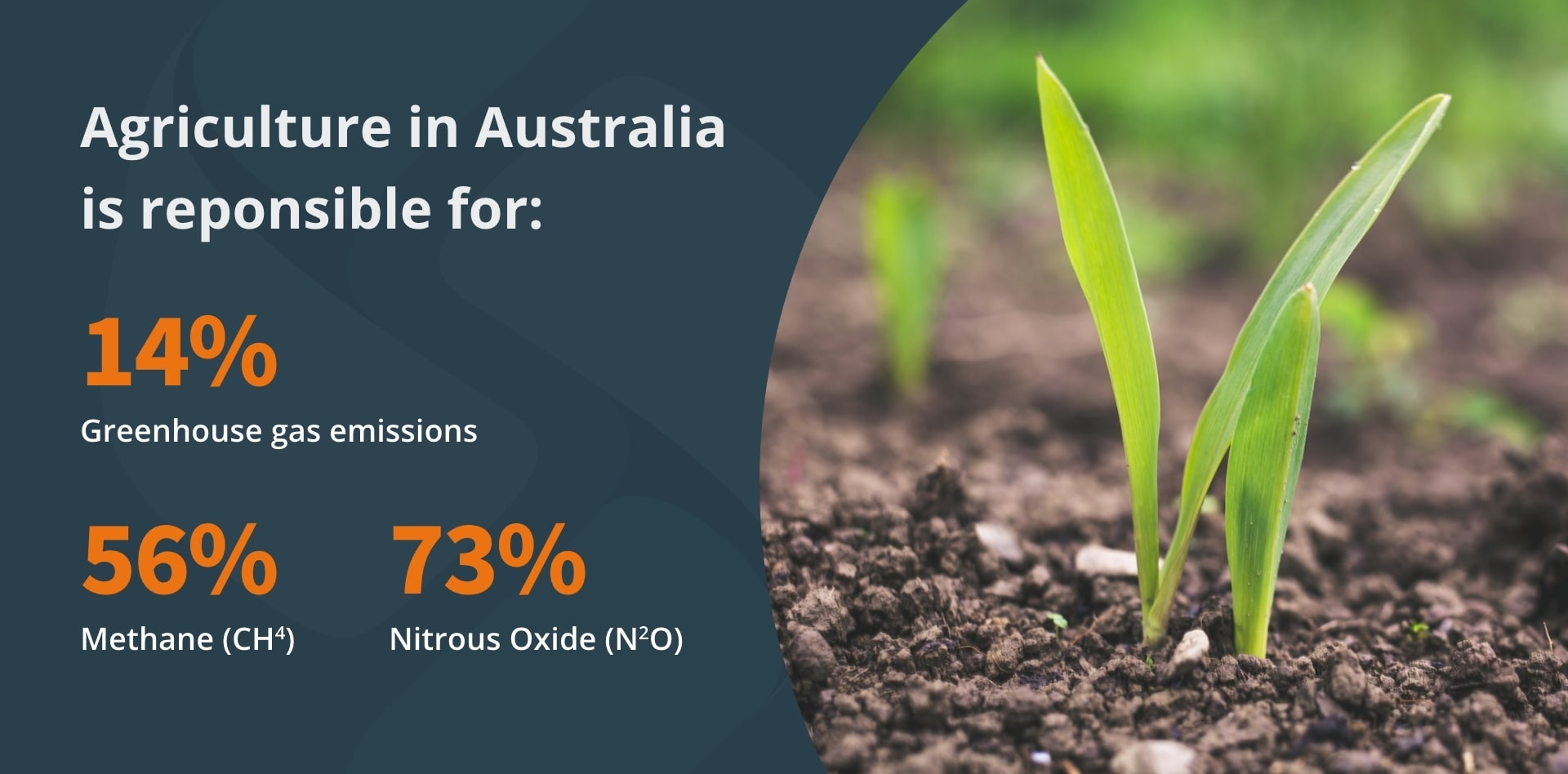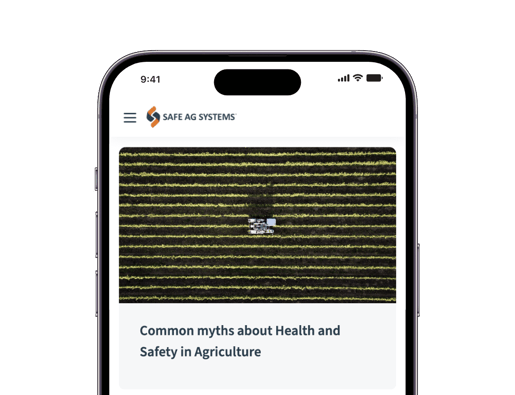Why is Sustainability Relevant to Agriculture?
Introduction
No matter if you are located in Australia, the United States (U.S.), Canada or the United Kingdom (UK), you will have started to hear more and more about sustainability in the agricultural and farming industry. Perhaps you’ve been involved in sustainable farming practices for a while now… either way, it is a development in farming that is being felt and implemented around the globe. To support the growers and producers on-farm address consumer concerns whilst continuing to financially sustain their agribusinesses.
Sustainability in agriculture not only impacts the environment, but it effects every person and business within a food supply chain from growers, processors, distributors and retailers, the consumers and waste management companies.
What is sustainable agriculture? That is an interesting question to answer as it involves various methods covering a range of disciplines featuring a combination of interests to both support our farmers and the community of consumers, it involves biology, economics, engineering, chemistry and so much more, but don’t let that overwhelm you.
In this article we will outline some of the methods for sustainable agriculture.
Chapter Contents
01 What does Sustainability Mean?
According to the Food and Agriculture Organisation of the United Nations (FAO), there are five principles for sustainability in food and agriculture. These five principles should be used to guide decision-making and when developing policies, strategies and other programs.
-
Improving efficiency in the use of resources
-
Conserving, protecting and enhancing natural ecosystems
-
Protecting and improving rural livelihoods and social well-being
-
Enhancing the resilience of people, communities and ecosystems
-
Promoting good governance of both natural and human systems
Put simply, sustainability in agriculture means farmers can produce food, fibre and other produce, now and in the future, without causing damage to the environment and natural resources around them.
02 The State of the Agricultural Industry, Farming and Net Zero
Agriculture accounts for 4% of global Gross Domestic Production (GDP) as of 2018. When looking at the advanced economies of Australia, the UK and the U.S., agriculture accounts for significantly less of the GDP. With 1.9% of Australia’s GDP deriving from agricultural practices whilst the UK sees 0.51% of its GDP coming from agriculture and the U.S. agricultural industry accounting for 0.6% of its GDP. However, agriculture accounts for a large part of global emissions making up 18.4% of greenhouse gases in 2016. This is well above its GDP contribution.
Agriculture’s greenhouse gas contribution can be broken down into five main areas: livestock and manure, agricultural soils, crop burning, and deforestation. Due to its emissions output, the industry is coming under pressure to reduce it’s emissions footprint. These pressures are coming from consumers, industry, and government. A clear example of this is the common argument to reduce meat consumption in order to cut down on global emissions. In response to this, the Cattle Council of Australia has set a commitment to be net zero by 2030.
Similarly, food processors such as Nestle and Asahi have targets of reducing their emissions, including their suppliers by 50% in 2030 and net zero by 2050. World governments have also been increasingly pushing up towards net zero emissions by 2050 with many such as Australia legislating a floor reduction of 43% by 2030. With the world experiencing the greater effects of climate change every industry is being called on to do its part and reduce emissions. The agricultural industry is not exempt from the push for a net zero future.

03 Why is Sustainability in Farming Important?
In a perfect world, sustainable farming practices, when incorporated correctly, considers both economic capabilities and profitability, integrating them with environmental health as well as social and economic equity. The FAO succinctly states, “To be sustainable, agriculture must meet the needs of present and future generations… Sustainable food and agriculture (SFA) contributes to all four pillars of food security – availability, access, utilization and stability”.
Everyday the agricultural industry becomes more innovative, relying on tech to support their efforts, this demonstrates farmers aren’t afraid to modernise their practices. Why does sustainability matter? With so many factors out of a farmers control, implementing sustainable farming practices in daily operations makes a business more resilient to impacts of climate change including droughts and floods. Did you know unsustainable farming practices can negatively impact on climate change, pollution, water consumption and land conservation.
Climate Change
The farming and agricultural industry is perhaps the most vulnerable to the impacts of climate change. Think increased temperatures and heavy rainfall (weather variability), frequent extremes when it comes to weather. Unfortunately, we know agriculture contributes negatively towards climate change through use of machinery, back burning, land clearing, all contribute to the production of greenhouse gases.
Water Consumption
The Organisation for Economic Co-operation and Development notes that, “Managing water sustainably is key to the future of food and agriculture.” When it comes to water consumption, agriculture as an industry is both at risk of water constraints (lack of supply through drought or dwindling access to reserves) as well a contributing factor to water risk through pollution; agricultural fertiliser run-off, pesticide use and livestock effluents and water quality deterioration. According to the World Wildlife Fund, agriculture, mainly irrigated agriculture, consumes roughly 69% of the global fresh water supply.
Pollution
When you really think about it, it shouldn’t come as a surprise that farming has contributed to global pollution. Now before you get offended, it is a leading source for many countries due to the use of pesticides, fertilisers and other harmful chemicals that can stay in the soil, air, water and ecosystem for long periods of time. For example in Queensland, Australia, pollutants in land-based run-off that pose a threat to the Great Barrier Reef. There are 35 major catchments draining into the Great Barrier Reef Region which are now part of the Reef 2050 Water Quality Improvement Plan. “The long-term (2050) outcome is that ‘Good water quality sustains the outstanding universal value of the Great Barrier Reef, builds resilience, improves ecosystem health and benefits communities’.

Land Conversion
Land use is the foundation of agriculture, the FAO estimate that the approximate global land used by agriculture equates to five billion hectares, or 38% of the worlds land surface. Why is this bad for sustainability and the future of agriculture?
“Land conversion from natural ecosystems to agriculture has historically been the largest cause of greenhouse gas emissions, linked to loss of biomass and carbon in biomass above and below ground.”
The new industry goal is to maximise the land we do use for crop production and minimise the environmental impact for various reasons (deforestation, overuse of resources, damage to biodiversity and destroying habitats).
“We need to expand and accelerate the transition to sustainable food and agriculture which ensures world food security, provides economic and social opportunities, and protects the ecosystem services on which agriculture depends.”
Building a common vision for sustainable food and agriculture, FAO, 2014.
04Methods of Reduction
The push for a decarbonized economy can often paint emitters as evil and lazy. Unfortunately, the agricultural industry can often be lumped into this category. However, this does not mean that Agriculture is inherently bad for the environment nor that it can’t be part of the solution to help reduce global emissions.

*https://www.agric.wa.gov.au/carbon-farming/carbon-farming-agricultural-land-wa
05What is Regenerative Agriculture?
Regenerative agriculture often gets confused with sustainable farming. The wording is almost interchangeable, yes they share similar methods, philosophies or strategies, but they do have key differences. The notion of sustainability is to maintain farming and its system without negative impacts, making the system more resilient. Regenerative Agriculture implements practices or a framework that renews the land, seeking to improve the overall ecosystem. The end goal of sustainability in agriculture isn’t just to slow down the impacts the industry has on the land, but to also ensure the industry itself has a future through renewal and restoration.
Often primary producers are already undertaking regenerative farming practices without realizing that this is what they are doing. Such practices can include, no-tillage, direct seeding, revegetation of part of the property, decreasing chemical usage, fallowing, not burning stubble, and planting cover crops after harvesting so the soil does not remain exposed. It is these practices which are underpinning different government initiatives to build market-based incentives such as the Australian Carbon Credit Unit (ACCU).
These are credits that the Australian federal government issue to producers who can prove via projects that they are sinking emissions. This process is handled by the Australian Emission Reduction Fund.
06What are the Benefits of Conservation Tillage?
Did you know there are two types of tillage? At this stage you might be wondering what’s the difference between conventional/traditional tillage and conservation tillage so we’ll try and clear that up.
Conventional tillage includes practices where plant residue is removed from the previous crop. The soil surface is left bare, exposed and loosened. Conventional tillage is the main form of seedbed preparation and weed control in agriculture.
Conservation tillage is a management approach which assists in carbon dioxide reduction and a decrease in greenhouse gas emissions. Also known as minimum tillage in some countries, conservation tillage includes no-till, strip till, ridge till and mulch till practices.
Whilst tillage is often seen as a crucial element for profitable crop production, conservation tillage techniques reduce wind and water soil erosion, loss of nutrients in the soil, can improve air and water quality, reducing runoff with improved soil infiltration as well as proving economically beneficial for farmers when implemented correctly. Farmers have recorded a reduction in labour costs, time saving and a decrease in machinery passes over the field in turn reducing wear and tear, and a cutback on fuel consumption.
07Carbon Sequestration
So now you’re wondering what is Carbon Sequestration, and how can farmers improve it? The basics of carbon sequestration is that plants and crops are capturing and storing carbon dioxide in the soil through photosynthesis. Crops can reduce the amount of carbon dioxide in the atmosphere, and producing the oxygen we breathe. When farmers disturb soil in the fields and paddocks it releases the stored carbon back into the atmosphere. The main objective of Carbon Sequestration is to address and reduce climate change.
The Australian Climate Change Authority states, “Achieving the Paris Agreement goal to limit global warming to well below 2°C requires more than deep cuts to global greenhouse gas emissions. Removing emissions from our atmosphere is critical to complement the sharp reductions needed, and to avoid the worst impacts of a warmer world.”
Sustainable land and water management practices is an important way to encourage carbon sequestration. There are many benefits, including profitability, for carbon sequestration in agriculture. Farmers are participating in private carbon sales with farmer-to-client contracts bypassing the government. These saw a combined value of $150 million in 2021. These direct payments are often linked to carbon sequestration.
The other main type of ACCUs and private contracts are linked to restoring land back to forests and native grasslands.
Never miss out
We’ll send you our latest blog articles, important ag news and free resources!

Product
Resources
Our Company
Copyright 2025. Safe Ag Systems
- Privacy Policy
- Terms and Conditions
- Data Protection & Security







.jpg?width=1920&height=1439&name=dan-meyers-IQVFVH0ajag-unsplash%20(1).jpg)

.png?width=560&height=280&name=Dementia%20-%20newsletter%20(2).png)
